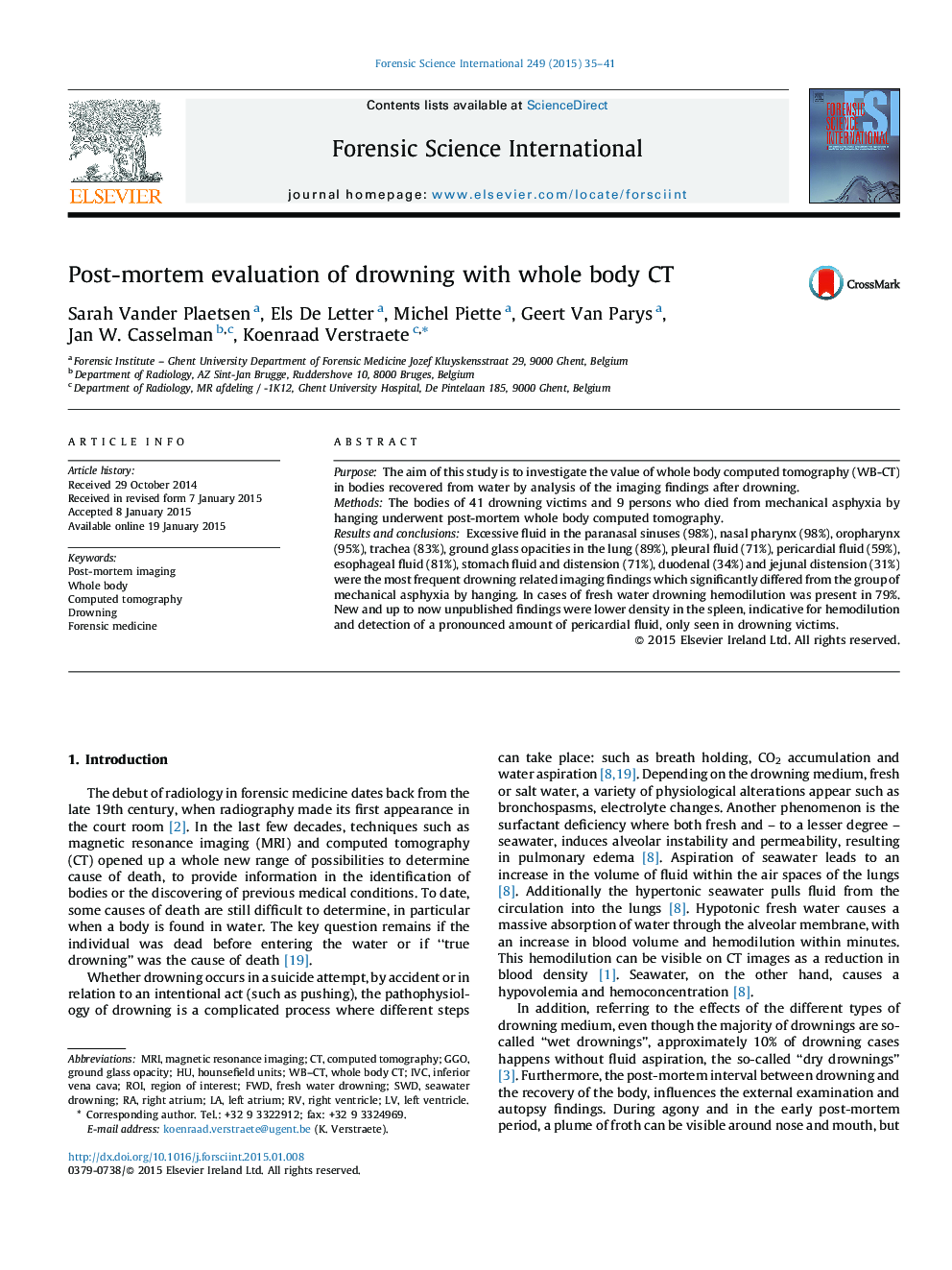| Article ID | Journal | Published Year | Pages | File Type |
|---|---|---|---|---|
| 95404 | Forensic Science International | 2015 | 7 Pages |
•New and up to now unpublished finding of pericardial fluid in drowning victims.•Hemodilution in fresh water drownings is present in right atrium, IVC and spleen.•A marker for emphysema aquosum can be visible by the lower position of the diaphragm.
PurposeThe aim of this study is to investigate the value of whole body computed tomography (WB-CT) in bodies recovered from water by analysis of the imaging findings after drowning.MethodsThe bodies of 41 drowning victims and 9 persons who died from mechanical asphyxia by hanging underwent post-mortem whole body computed tomography.Results and conclusionsExcessive fluid in the paranasal sinuses (98%), nasal pharynx (98%), oropharynx (95%), trachea (83%), ground glass opacities in the lung (89%), pleural fluid (71%), pericardial fluid (59%), esophageal fluid (81%), stomach fluid and distension (71%), duodenal (34%) and jejunal distension (31%) were the most frequent drowning related imaging findings which significantly differed from the group of mechanical asphyxia by hanging. In cases of fresh water drowning hemodilution was present in 79%. New and up to now unpublished findings were lower density in the spleen, indicative for hemodilution and detection of a pronounced amount of pericardial fluid, only seen in drowning victims.
